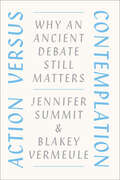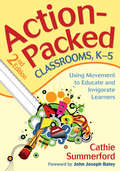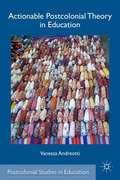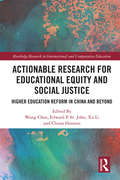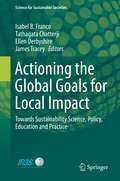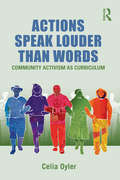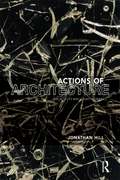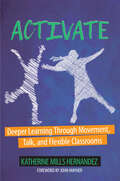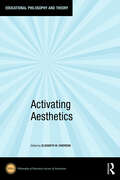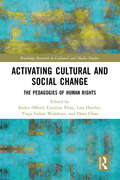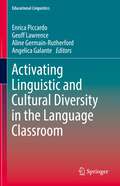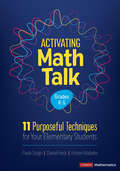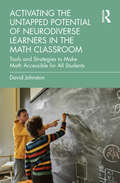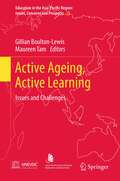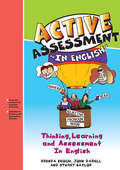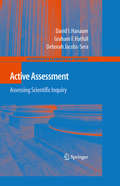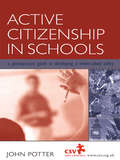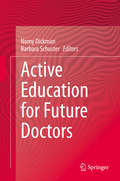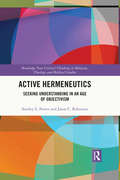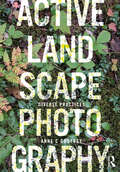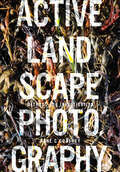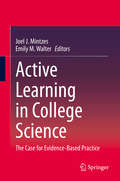- Table View
- List View
Action versus Contemplation: Why an Ancient Debate Still Matters
by Jennifer Summit Blakey Vermeule“All of humanity’s problems stem from man’s inability to sit quietly in a room alone,” Blaise Pascal wrote in 1654. But then there’s Walt Whitman, in 1856: “Whoever you are, come forth! Or man or woman come forth! / You must not stay sleeping and dallying there in the house.” It is truly an ancient debate: Is it better to be active or contemplative? To do or to think? To make an impact, or to understand the world more deeply? Aristotle argued for contemplation as the highest state of human flourishing. But it was through action that his student Alexander the Great conquered the known world. Which should we aim at? Centuries later, this argument underlies a surprising number of the questions we face in contemporary life. Should students study the humanities, or train for a job? Should adults work for money or for meaning? And in tumultuous times, should any of us sit on the sidelines, pondering great books, or throw ourselves into protests and petition drives? With Action versus Contemplation, Jennifer Summit and Blakey Vermeule address the question in a refreshingly unexpected way: by refusing to take sides. Rather, they argue for a rethinking of the very opposition. The active and the contemplative can—and should—be vibrantly alive in each of us, fused rather than sundered. Writing in a personable, accessible style, Summit and Vermeule guide readers through the long history of this debate from Plato to Pixar, drawing compelling connections to the questions and problems of today. Rather than playing one against the other, they argue, we can discover how the two can nourish, invigorate, and give meaning to each other, as they have for the many writers, artists, and thinkers, past and present, whose examples give the book its rich, lively texture of interplay and reference. This is not a self-help book. It won’t give you instructions on how to live your life. Instead, it will do something better: it will remind you of the richness of a life that embraces action and contemplation, company and solitude, living in the moment and planning for the future. Which is better? Readers of this book will discover the answer: both.
Action-Packed Classrooms, K-5: Using Movement to Educate and Invigorate Learners
by Cathie SummerfordUse movement and music to stimulate children’s ability to absorb and retain new information! Focusing on using movement and music to energize young students and boost their learning, this research-based book offers strategies for basic energizers, clear objectives for standards-aligned instruction, and a student/teacher/principal agreement to commit to active learning. Showing how exciting and fun learning can be, this new edition: Includes new chapters on planning and organizing lessons Offers sample activities in math, social studies, science, language arts, health, and physical education Provides tools for assessing the effectiveness of activities Presents updated brain research
Actionable Postcolonial Theory in Education
by Vanessa AndreottiAndreotti illustrates how postcolonial theory is applied in the contexts of educational research/critique and in pioneering pedagogical projects. She offers an accessible and useful overview and comparison of theoretical debates related to critiques of Western/Northern hegemony.
Actionable Research for Educational Equity and Social Justice: Higher Education Reform in China and Beyond (Routledge Research in International and Comparative Education)
by Edward P. St. John Wang Chen Xu Li Cliona HannonActionable Research for Educational Equity and Social Justice advances a unique, engaged approach to promoting educational equity and social justice in higher education across China and beyond. Developed as a joint venture of senior and junior scholars in China and the United States, this book documents Chinese, Latin American, U.S., and European examples of engaged scholarship supporting the development of strategies for expanding educational opportunities for low-income families. Drawing from collaborative research, workshops, and field investigations, chapter authors propose and test new methods and practices for reducing educational inequality and provide examples of successful practices that have improved access for low-income students across the globe.
Actioning the Global Goals for Local Impact: Towards Sustainability Science, Policy, Education and Practice (Science for Sustainable Societies)
by Isabel B. Franco Tathagata Chatterji Ellen Derbyshire James TraceyThis book highlights the value of sustainability science in newly emerging and innovative approaches to research, education, capacity building and practice in order to transform rhetoric into impact sustainability. Presenting case studies from various industries, sectors and geographical contexts targeting the seventeen (Sustainable development Goals (SDGs) outlined in the 2030 Agenda, it provides insightful recommendations to create sustainable impact while at the same time achieving the global goals. The book addresses the fundamental question of how sustainability rehtoric can be transformed into impact sustainability research, education and capacity building and as a result, how existing approaches in science, curricula and practice are mitigating the demands emerging from addressing global sustainable development in an impactful and innovative manner. Providing recommendations for impact sustainability in science, curriculum on how to address pressing sustainability issues and contribute toward achieving the SDGs, this book is an essential reference for both academics and professionals.
Actions Speak Louder than Words: Community Activism as Curriculum (Teaching/Learning Social Justice)
by Celia OylerHow do educators engage students in community action projects without telling them what to think, how to think, or what to do? Is it possible to integrate social justice organizing into the curriculum without imposing one’s political views on students? In Actions Speak Louder than Words, longtime activist and teacher educator Celia Oyler delves into such questions through firsthand accounts of social action projects. By moving beyond charity work or volunteerism, she shows how community activism projects offer fertile ground for practicing democratic engagement as part of classroom work. Actions Speak Louder than Words is a systematic, qualitative study offering in-depth and detailed portraits of teachers who design social action projects as part of the regular classroom curriculum. Each case forms a chapter organized as a narrative that includes excerpts from classroom dialogues, and interviews with students, teachers, and parents describing their social action projects with sufficient detail to give educators guidance for designing such projects for their own classrooms. The final chapter examines power, pedagogy, and learning outcomes across the cases, providing specific guidance to educators wishing to take up such projects and offering instructional and procedural advice as well as cautions. A fresh new example of taking up the challenge to teach toward equity and social justice, Actions Speak Louder than Words is an invaluable resource for educators who are passionate about the possibility of integrating activism and advocacy into curriculum as a means to engage in strong democracy.
Actions of Architecture: Architects and Creative Users
by Jonathan HillDrawing on the work of a wide range of architects, artists and writers, this book considers the relations between the architect and the user, which it compares to the relations between the artist and viewer and the author and reader. The book's thesis is informed by the text 'The Death of the Author', in which Roland Barthes argues for a writer aware of the creativity of the reader. Actions of Architecture begins with a critique of strategies that define the user as passive and predictable, such as contemplation and functionalism. Subsequently it considers how an awareness of user creativity informs architecture, architects and concepts of authorship in architectural design. Identifying strategies that recognize user creativity, such as appropriation, collaboration, disjunction, DIY, montage, polyvalence and uselessness, Actions of Architecture states that the creative user should be the central concern of architectural design.
Activate: Deeper Learning through Movement, Talk, and Flexible Classrooms
by Katherine HernandezDiscover what happens when your students step out of their daily routines and activate their engagement. Author Katherine Mills Hernandez argues that movement, talk, and the physical environment of the classroom all contribute and influence students' learning. The ideas in Activate! will help you create a classroom optimized for deeper engagement and lasting learning.No matter what subject you teach, Katherine invites you to shift your attention from what you are doing in the classroom, to what your students are doing as the catalyst for learning. She provides insights into instruction through real classroom lessons as she gives you the tools to better assess your students' engagement and energy levels. The book describes practical ways to incorporate movement into the classroom routine, based on research on how an active brain generates true learning.Katherine invites you into her own classroom by sharing vignettes from lessons and activities, opening up the pages of her own learning journal, sharing pictures from her classroom, and examples of classroom charts. She also provides a comprehensive bibliography on the research behind the science of movement and talk and how they affect learning.
Activating Aesthetics (ISSN)
by Elizabeth M. GriersonActivating Aesthetics addresses questions of aesthetics in various fields of education, with the aim of investigating a way of revealing how aesthetics may activate an engaged, responsive and poetic pedagogy. The writers in this collection enliven different ways of thinking about aesthetics, educating through aesthetics and questioning aesthetics. They approach aesthetics through the lenses of art practice and art history, painting and literature, film and popular culture, the built environment and pedagogy, music making and reception, and feminist subjectivity and philosophy. Beyond instrumentalism, each chapter approaches questions of aesthetics by dismantling subject–object separations of analytical aesthetics and opening the potential of aesthetics to work as an activating force in education. The premise is that education, driven by means–end instrumentalism, may be activated another way via aesthetic encounters premised in difference. To build this argument, the authors engage works of Adorno, Benjamin, Bourdieu, Deleuze, Guattari, Heidegger, Hölderlin, Hokusai, Irigaray, Nietzsche, Sterne and Stiegler. The juxtaposition of these diverse theorists, philosophers, artists and writers makes for a rich tapestry of different perspectives on processes of learning, knowing and being. Aesthetics in activation discloses new ways of thinking about poetic and engaged pedagogy. Through these different perspectives, the whole collection works towards an educational philosophy of aesthetics. The chapters in this book were originally published as articles in the Educational Philosophy and Theory journal.
Activating Cultural and Social Change: The Pedagogies of Human Rights (Routledge Research in Cultural and Media Studies)
by Baden OffordIn this thought-provoking book, a diverse range of educators, activists, academics, and community advocates provide theoretical and practical ways of activating our knowledge and understanding of how to build a human rights culture. Addressing approaches and applications to human rights within current socio-cultural, political, socio-legal, environmental, educational, and global contexts, these chapters explore tensions, contradictions, and complexities within human rights education. The book establishes cultural and educational practices as intrinsically linked to human rights consciousness and social justice, showing how signature pedagogies used by human rights practitioners can be intellectual, creative, or a combination of both. Across three sections, the book discusses ways of bringing about holistic, relevant, and compelling approaches for challenging and understanding structures of power, which have become a global system, while also suggesting a move from abstract human rights principles, declarations, and instruments to meaningful changes that do not dehumanise and distance us from intrinsic and extrinsic oppressions, denial of identity and community, and other forms of human rights abuse. Offering new critical cultural studies approaches on how a human rights consciousness arises and is practised, this book will be of great interest to scholars and students of cultural studies, education studies, critical sociology, human rights education, and human rights studies.
Activating Linguistic and Cultural Diversity in the Language Classroom (Educational Linguistics #55)
by Enrica Piccardo Aline Germain-Rutherford Geoff Lawrence Angelica GalanteThis book challenges the reader to rethink and reimagine what diversity in language education means in transnational societies. Bringing together researchers and practitioners who contributed to the international LINguistic and Cultural DIversity REinvented (LINCDIRE) project, the book examines four pillars of innovation in language education: the Action-oriented approach, Plurilingualism, Indigenous epistemologies and Technology enhanced learning. The book critically discusses plurilingual pedagogical approaches that draw on learners' linguistic and cultural repertoires to encourage and support the dynamic use of languages in curricular innovation. It is a fundamental resource for language teachers, curriculum designers and educational researchers interested in understanding current thinking on the relevance and benefit of a plurilingual paradigm shift for language education in today's societies. More specifically, this book: Examines the development of plurilingualism and the potential of real-life oriented teaching and learning. Explores the concept of plurilingual and pluricultural competence. Focuses on collaboration and reflection from a humanistic tradition. Explores educational technology and explains the limitations and challenges of adopting ready-made tools. Highlights the iterative, design-based research process that informed the development of LINCDIRE’s pedagogical framework and action-oriented scenarios. Introduces practical examples of action-oriented tasks and scenarios, and illustrates the online tool (LITE) in terms of its current functionalities and design. Describes the implementation challenges and opportunities of plurilingual action-oriented tasks and discusses the results of implementation. Finally, the book examines future pedagogical innovation and research directions in order to help readers reflect on the implications of achieving sustainable change in language education.This exciting collection addresses an important question in language education: How can plurilingualism and cultural diversity be harnessed to promote sustainable innovation in language learning and teaching? Readers will find contributions from the diverse authors timely, compelling, and engaging.— Dr. Bonny Norton, FRSC, University Killam Professor, UBC Dept. of Language & Literacy Education, CanadaEmbracing a design-based research framework, this book offers learners and teachers powerful validation and a rich, relatable and inspiring action-oriented approach to holistic, dynamic, mediated, embodied, true-to-life, plurilingual language teaching and learning.— Dr. Elka Todeva, Professor of Applied Linguistics, MATESOL Program / Advanced Seminar in Plurilingual Pedagogy, SIT Graduate Institute, Washington, D.C.Anyone seeking innovation in Language Education will find in this volume a treasure trove of theoretical, empirical and methodological insights to answer the questions that arose among the 25 co-authors’ discussions to rethink language use, language learning, and language teaching.— Dr. Mercedes Bernaus, Emeritus Professor, Universitat Autònoma de Barcelona, SpainThis thought-provoking and timely book argues convincingly for the need to reconceptualize innovation in language education in an increasingly diverse world. —Dr. Regine Hampel, Associate Dean (Research Excellence), Faculty of Wellbeing, Education and Language Studies, The Open University, UK
Activating Math Talk: 11 Purposeful Techniques for Your Elementary Students (Corwin Mathematics Series)
by Paola Sztajn Daniel Heck Kristen MalzahnAchieve High-Quality Mathematics Discourse With Purposeful Talk Techniques Many mathematics teachers agree that engaging students in high quality discourse is important for their conceptual learning, but successfully promoting such discourse in elementary classrooms—with attention to the needs of every learner—can be a challenge. Activating Math Talk tackles this challenge by bringing practical, math-specific, productive discourse techniques that are applicable to any lesson or curriculum. Framed around 11 student-centered discourse techniques, this research-based book connects purposeful instructional techniques to specific lesson goals and includes a focus on supporting emergent multilingual learners. You will be guided through each technique with Classroom examples of tasks and techniques spanning grades K–5 Reflection moments to help you consider how key ideas relate to your own instruction Classroom vignettes that illustrate the techniques in action and provide opportunities to analyze and prepare for your own implementation Group discussion questions for engaging with colleagues in your professional community Achieving high-quality mathematics discourse is within your reach using the clear-cut techniques that activates your math talk efforts to promote every student’s conceptual learning.
Activating Math Talk: 11 Purposeful Techniques for Your Elementary Students (Corwin Mathematics Series)
by Paola Sztajn Daniel Heck Kristen MalzahnAchieve High-Quality Mathematics Discourse With Purposeful Talk Techniques Many mathematics teachers agree that engaging students in high quality discourse is important for their conceptual learning, but successfully promoting such discourse in elementary classrooms—with attention to the needs of every learner—can be a challenge. Activating Math Talk tackles this challenge by bringing practical, math-specific, productive discourse techniques that are applicable to any lesson or curriculum. Framed around 11 student-centered discourse techniques, this research-based book connects purposeful instructional techniques to specific lesson goals and includes a focus on supporting emergent multilingual learners. You will be guided through each technique with Classroom examples of tasks and techniques spanning grades K–5 Reflection moments to help you consider how key ideas relate to your own instruction Classroom vignettes that illustrate the techniques in action and provide opportunities to analyze and prepare for your own implementation Group discussion questions for engaging with colleagues in your professional community Achieving high-quality mathematics discourse is within your reach using the clear-cut techniques that activates your math talk efforts to promote every student’s conceptual learning.
Activating Voices in Jazz History: Students Broadening the Narrative (CMS Emerging Fields in Music)
by Anthony D.J. BrankerActivating Voices in Jazz History: Students Broadening the Narrative highlights the research of students who have been challenged to assess and interpret evidence found in historical records and engage in field interviews with a diverse representation of jazz artists. This approach serves as a method for co-creating a living history of jazz.Drawing from the author’s experience in teaching jazz historiography and recognizing that Jazz, African American music, and the music of the African diaspora offer unique perspectives rooted in culture and community, the book presents a culturally relevant view of the history of jazz. It also proposes a much-needed alternative methodology for teaching this subject. The author reflects on the issues that shape the framing of jazz history and discusses how using a dialogic approach can enable students to engage in critical conversations. The student-led interviews with artists focus on themes such as diversity and inclusion, gender equity, social justice, cultural identity and identification, what the word “jazz” represents, primitivism, reflections on pedagogy, the current state of jazz education, and the development of artistic voice and creative self-expression.This concise book will be a valuable resource for jazz educators, scholars, students, and enthusiasts alike.
Activating the Untapped Potential of Neurodiverse Learners in the Math Classroom: Tools and Strategies to Make Math Accessible for All Students
by David JohnstonAll students deserve access to a rich and meaningful math curriculum. This book guides middle and high school teachers toward providing all learners – including neurodiverse students – with the support necessary to engage in rewarding math content. Students who receive special education services often experience a limited curriculum through practices that create long-term disadvantages and increase gaps in learning. The tools and strategies in this book help teachers better understand their students to move them closer to their potential. Chapters include differentiation, assessment, classroom structure, and learning targets. Both general education math teachers who have not been trained in special education support and special education teachers with a limited background in standards-based math pedagogy will learn new skills to improve their teaching from this practical resource.
Active Ageing, Active Learning: Issues and Challenges (Education in the Asia-Pacific Region: Issues, Concerns and Prospects #15)
by Gillian Boulton-Lewis Maureen TamThis book is concerned with the general issues of ageing, learning and education for the elderly and then with the more specific issues of why, how and what elders want to learn. This monograph consists of 10 chapters written by various internationally renowned researchers and scholar-practitioners in the field.
Active Assessment for Science: Thinking, Learning and Assessment in Science
by Anne Goldsworthy Brenda Keogh Stuart NaylorEverybody seems to be talking about assessment for learning. This book shows how to do it. Using a highly creative approach it explains in detail how assessment, thinking and learning can be integrated in science lessons. More than 30 different assessment techniques are described, with each one illustrated for two different age ranges.Concise teachers' notes for each technique explain:what the approach ishow you use it for assessmenthow you can manage it in the classroomhow it helps with learning.Electronic versions of the activities are provided on the accompanying downloadable resources.
Active Assessment in English: Thinking Learning and Assessment In English
by Brenda Keogh John Dabell Stuart NaylorEverybody seems to be talking about Assessment for Learning. This book shows you how to do it.The thinking behind the highly influential ‘Assessment for Learning’ approach is translated into usable and practical strategies for all those teaching literacy in primary and secondary classrooms.The authors show how thinking, learning and assessment can be linked together in a creative and integrated fashion, so that thinking promotes learning, learning enables assessment to take place and assessment acts as a stimulus to both thinking and learning. Concise teachers’ notes for a broad range of dynamic techniques explain for each:what the approach ishow you use it for assessment how you can manage it in the classroomhow it helps with learning.Downloadable resources are included with all of the activities and ideas that can be used on Interactive Whiteboards. Active Assessment for English will prove inspiring reading for all literacy teachers at primary and secondary levels, LEA advisers and inspectors.
Active Assessment: Assessing Scientific Inquiry (Mentoring in Academia and Industry #2)
by David I. Hanauer Debbie Jacobs-Sera Graham F. HatfullThe book is designed to provide a theoretical introduction to the field of active assessment, a practical guide to the development of assessment tools for scientific inquiry and a case study of a specific development and implementation process of assessment in a scientific inquiry program. As currently designed the book would have two sections: the first, theoretical and practical developing the concepts of how assessment is developed and implemented and the second section, a case study from research work conducted in the outreach program of the Bacteriophage Institute of Pittsburgh. The book is designed for a wide market of scientists involved in scientific education laboratory work. As with the original research project, this book breaks new ground in the area of scientific education and assessment and at this current time there is no book or research monograph that explicates a serious, comprehensive approach to the assessment of scientific inquiry. It is important to note that according to all the central bodies involved in science education (see the National Research Council's standards for science education) that the use of scientific inquiry is the preferred method of teaching science. Accordingly a book of this type should provide an important service for all active scientific inquiry programs in that it presents for the first time a concept and method for assessing scientific inquiry on the undergraduate and graduate levels. This book could provide an interesting answer to this situation of a required educational context without developed methodologies for evaluation.
Active Citizenship in Schools: A Good Practice Guide to Developing a Whole School Policy
by John PotterCommunity Service Volunteers is known nationally for its high profile citizenship and community learning schemes, including the Barclays New Futures project, National Tutoring scheme and the Millennium Awards. In addition, CSV Education for Citizenship provides a full support and consultancy service for assisting with the development of citizenship and community links by schools, education authorities, organisations and government. This book is based directly on this experience, and will carry their successful and tested approaches across the education sector. Providing the support needed for schools and other groups to develop citizenship and community learning links as an active part of their curriculum, this book offers point-by-point advice for school leaders and managers backed up by an unrivalled range of national case studies and experiences. Using in-depth analysis, it covers: * peer learning* community service* environmental work. Furthermore, this book looks at intergenerational projects and initiatives to develop communities and schools through the arts, sciences and sports.
Active Education for Future Doctors
by Nomy Dickman Barbara SchusterThis book is designed to aid the faculty of medical and other health related schools in developing the pedagogical skills to transform their teaching in multiple settings including the classroom, the conference room, the ambulatory office, and the hospital from a passive learning experience to an active learning experience. In this transformation, the teacher morphs from the ‘all knowing expert’ to the ‘learning facilitator and coach’. After a brief review of adult learning theory the remainder of the book will focus on a broad variety of teaching techniques and classroom activities that ‘flip’ the classroom from a passive to an active learning environment. In addition to condensed explanations of each of the techniques, examples of each process will be presented with suggestions for flexing the techniques to better accommodate a variety of learning settings and a diversity of learners.
Active Hermeneutics: Seeking Understanding in an Age of Objectivism (Routledge New Critical Thinking in Religion, Theology and Biblical Studies)
by Stanley E. Porter Jason C. RobinsonHermeneutics, as a discipline of the humanities, is often assumed to be in thrall to the same subjectivity of every interpretive method, in direct contrast to the objectivity prized by the natural sciences. This book argues that there is a false dichotomy here, and that ancient and modern ideas of knowledge can be utilized to create a new active form of hermeneutics. One capable of creating a standard by which to judge better and worse models of understanding. This book explores decisive aspects over which the future of hermeneutics—a future inexplicably tied to a history of hermeneutics—will continue to struggle, namely the limits and possibilities of situated human understanding. This book is located in the middle of a number of major, converging discussions within contemporary intellectual discourse. Drawing upon a wide range of ancient and modern hermeneutical thought, including Aristotle, Bernstein, Heidegger, Kant, and Gadamer, the result is a hermeneutical approach that pushes beyond the traditional limits of human understanding. This is a bold attempt to move hermeneutics into a new phase. As such, it will be of significant interest to scholars and academics working in General Hermeneutics, Theology, and the Philosophy of Religion.
Active Landscape Photography: Diverse Practices (Active Landscape Photography)
by Anne C GodfreyDiverse Practices, the third book in the Active Landscape Photography series, presents a set of unique photographic examples for site-specific investigations of landscape places. Contributed by authors across academia, practice and photography, each chapter serves as a rigorous discussion about photographic methods for the landscape and their underlying concepts. Chapters also serve as unique case studies about specific projects, places and landscape issues. Project sites include the Miller Garden, Olana, XX Miller Prize and the Philando Castile Peace Garden. Landscape places discussed include the archeological landscapes of North Peru, watery littoral zones, the remote White Pass in Alaska, Sau Paulo and New York City’s Chinatown. Photographic image-making approaches include the use of lidar, repeat photography, collage, mapping, remote image capture, portraiture, image mining of internet sources, visual impact assessment, cameraless photography, transect walking and interviewing. These diverse practices demonstrate how photography, when utilized through a set of specific critical methods, becomes a rich process for investigating the landscape. Exploring this concept in relationship to specific contemporary sties and landscape issues reveals the intricacy and subtlety that exists when photography is used actively. Practitioners, academics, students and researchers will be inspired by the underlying concepts of these examples and come away with a better understanding about how to create their own rigorous photographic practices.
Active Landscape Photography: Methods for Investigation (Active Landscape Photography)
by Anne C GodfreyHow can photography be transformed into an active process of investigation for landscape architecture and environmental design? The second book in Godfrey’s series, Active Landscape Photography, presents engaged photographic methods that turn photography into a rigorous, thoughtful endeavor for the research, planning and design of landscape places. Photography is the most ubiquitous and important form of representation in these disciplines. Yet photography is not specifically taught as a core skill within these fields. This book creates a starting point for filling this gap. Concepts and working methods from contemporary photography and critical cultural theories are contextualized into situations encountered in the daily practice of landscape architecture and environmental design. These methods can be integrated into practices in academic and professional settings or picked up and self-taught by an individual reader. Part I: Methods presents easily accessible approaches to photography creating a core set of active skills. Part II: Practices discusses working methods of specific contemporary photographers and extrapolates their practices into common extrapolates their practices into common planning and design situations. Contemporary photographers presented include Richard Misrach, Dawoud Bey, Duane Michals, Latoya Ruby Frazier, Mark Klett, Sophie Calle, Joe Deal, Robert Adams, Naima Green, Bernd and Hilla Becher, Stephen Shore, David Hockney, Amy Sherald, William Christenberry, Jeff Wall, and Sohei Nishino. Beautifully illustrated in full color with over 150 images by Godfrey, her students, and contemporary photographers, this book provides both clear guidelines for a set of diverse methods as well as a deeper discussion about the implications of making and using photography in environmental design for professionals, academics, students and researchers.
Active Learning in College Science: The Case for Evidence-Based Practice
by Joel J. Mintzes Emily M. WalterThis book explores evidence-based practice in college science teaching. It is grounded in disciplinary education research by practicing scientists who have chosen to take Wieman’s (2014) challenge seriously, and to investigate claims about the efficacy of alternative strategies in college science teaching. In editing this book, we have chosen to showcase outstanding cases of exemplary practice supported by solid evidence, and to include practitioners who offer models of teaching and learning that meet the high standards of the scientific disciplines. Our intention is to let these distinguished scientists speak for themselves and to offer authentic guidance to those who seek models of excellence. Our primary audience consists of the thousands of dedicated faculty and graduate students who teach undergraduate science at community and technical colleges, 4-year liberal arts institutions, comprehensive regional campuses, and flagship research universities. In keeping with Wieman’s challenge, our primary focus has been on identifying classroom practices that encourage and support meaningful learning and conceptual understanding in the natural sciences. The content is structured as follows: after an Introduction based on Constructivist Learning Theory (Section I), the practices we explore are Eliciting Ideas and Encouraging Reflection (Section II); Using Clickers to Engage Students (Section III); Supporting Peer Interaction through Small Group Activities (Section IV); Restructuring Curriculum and Instruction (Section V); Rethinking the Physical Environment (Section VI); Enhancing Understanding with Technology (Section VII), and Assessing Understanding (Section VIII). The book’s final section (IX) is devoted to Professional Issues facing college and university faculty who choose to adopt active learning in their courses. The common feature underlying all of the strategies described in this book is their emphasis on actively engaging students who seek to make sense of natural objects and events. Many of the strategies we highlight emerge from a constructivist view of learning that has gained widespread acceptance in recent years. In this view, learners make sense of the world by forging connections between new ideas and those that are part of their existing knowledge base. For most students, that knowledge base is riddled with a host of naïve notions, misconceptions and alternative conceptions they have acquired throughout their lives. To a considerable extent, the job of the teacher is to coax out these ideas; to help students understand how their ideas differ from the scientifically accepted view; to assist as students restructure and reconcile their newly acquired knowledge; and to provide opportunities for students to evaluate what they have learned and apply it in novel circumstances. Clearly, this prescription demands far more than most college and university scientists have been prepared for.
